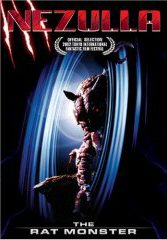
Horror and science fiction have long been recognized as powerful instruments for social criticism and change. From the earliest texts of classic mythology and cultural warnings of H. G. Wells to the nihilistic futures of George (1984) Orwell, fantastical images and sensationalistic plots have taught as well as entertained, challenging the self satisfaction and arrogance of the status quo. Classic science fiction and horror cinema took advantage of this powerful sub-textual tool more often (and with somewhat greater effect) than modern genre fare, criticizing technological over-indulgence and unlimited scientific power in their frightening fables of towering mutants and mythic monsters. The fifties saw an explosion of creature features aimed at merging entertainment and relevant political/social issues of the day, allegorizing the tensions of the Cold War, the threat of man-made disasters, and, a fan favorite, the effects of Nuclear experimentation. Mad science has continued to play a significant topical/thematic role in modern science fiction, and is the driving force behind Nezulla the Rat Monster. Preserving the allegorical warnings and metaphorical symbolism of classic creature-feature fare, this homage to old fashioned thrills is strengthened by its obvious indebtedness to the classic science-gone-awry sub-genre, showing stylistic and thematic nods to Food of the Gods and Godzilla, just to name a few. While it doesn't pack the wallop of Them! or capture the curious mix of shlock and sombreness of the Toho films, this contemporary hybrid of horrific ecology and man-made mutants has fun with its exploitative premise.
A Japanese Company funded by the United States discovers terror while toying with the rules of nature in the best traditional 'mad-science' fashion. Experimenting with anti-bacteriological weapons, they create mutated humanoid rats -- creatures that are grotesque and deadly. In a fit of rage, they murder the lab workers in the facility and spread general havoc. When the lab is condemned, the Powers That Be scramble to keep the secrets of its experiments secret. Unknown to them, a deadly bacteria leaks from the lab and spreads to the nearby inhabitants. A terrible epidemic follows, encouraging three people to investigate the lab in attempts to fathom the origin of this mystery. What they uncover is a threat of cosmic proportions, smacking of government conspiracy. Wrestling with their own instincts to survive and dominate, these ill prepared investigators are soon pitted against a monster beyond nightmare . . .
While nothing particularly new or startling is immediately apparent in either the basic story or stylistic execution of Nezulla the Rat Monster, the film faithfully captures the moralistic warnings of its predecessors while re-inventing its science, interweaving socially relevant questions of governmental and scientific culpability with full-frontal scares. If this picture, like its sub-genre in general -- are somewhat formulaic, as critics have rather smugly pointed out, the formula proves durable, as potent and aesthetically effective now as it was in decades past. Attempts at social criticism are handled somewhat clumsily by a wavering storyline, explored with all the sensitivity of a sledgehammer. But the director wisely doesn't allow sub-texts of cultural consciousness to overshadow his characters or action -- the latter of which are the meat and potatoes of such a stew. This movie has well executed monster attacks to recommend it, and a sense of panic that increases through character hysterics. Both the moral and physical atmosphere is handled nicely, becoming increasingly claustrophobic as action culminates. If many of the effects are inferior to many of the FX bonanzas of recent history -- as well they should considering the money lavished on their budgets -- they are somehow more pleasing, closer to earth and believability than damnable CGI effects that resemble badly made Saturday morning cartoons. The moments of carnage are handled with panache and a sense of enjoyment too often missing in the genre.
Nezulla is presented by Tokyo Shock (a member of the Media Blasters family) in 1.78:1 letterboxed anamorphic widescreen. The picture is smooth and concise, showing deep satisfying levels of dark blacks, reds, and blues. Skin tones are realistic, and there is no grain or splotching evident. The Japanese Dolby Digital 2.0 audio track is clear with optional English subtitles . No hissing or distortion was noticeable.
Extras are surprisingly weighty, outclassing most Asian film offerings. Wherein many Asian DVD supplements consist of "Making Of' features that are little more than people running around on menial jobs without any structure or reason, this disc features "The Making of Nezulla," a substantial assemblage of interviews, clips, and Making-Of footage. The interviews are lively and informative, and the documentary cut into specific segments, including "The Birth of Nezulla," "Behind the Scenes," "The Battle Begins," and others, each providing an in depth look at the film's inspiration and production. Film festival footage with a live audience rounds out the feature. Also included as extras are the theatrical trailer and spots for other Tokyo Shock goodies.
Review by William P. Simmons
| Released by Tokyo Shock |
| Region 1 - NTSC |
| Not Rated |
| Extras : |
| see main review |